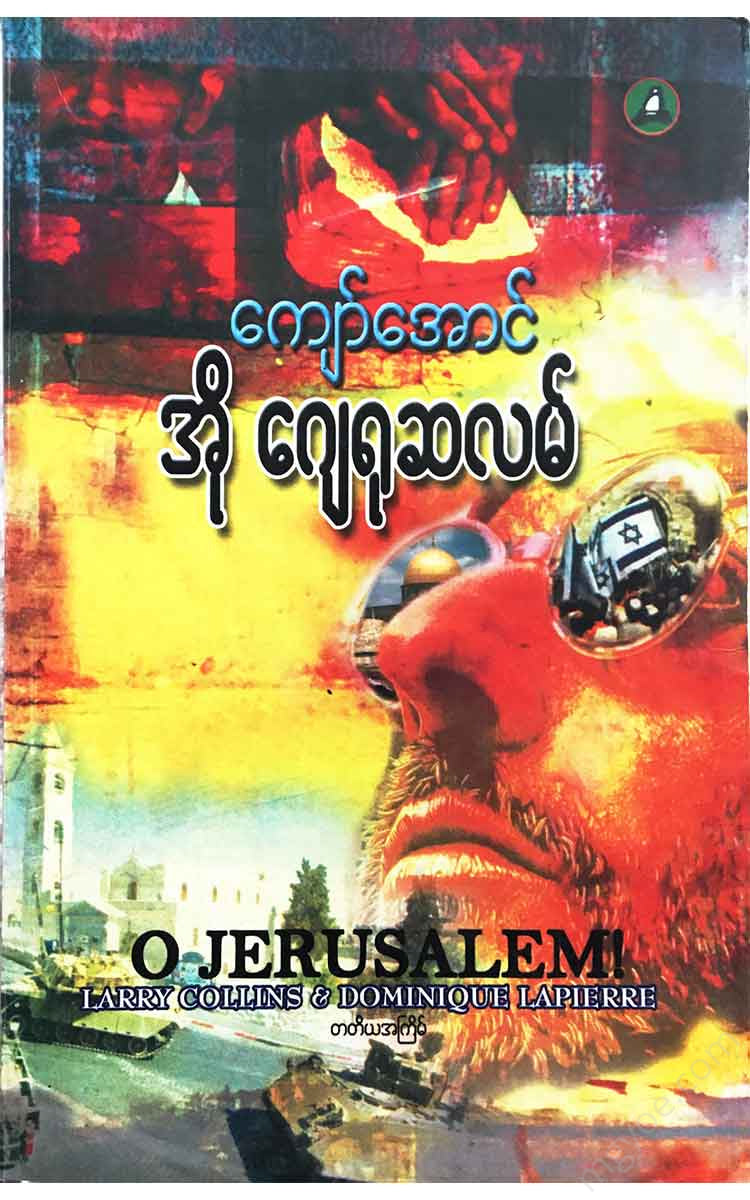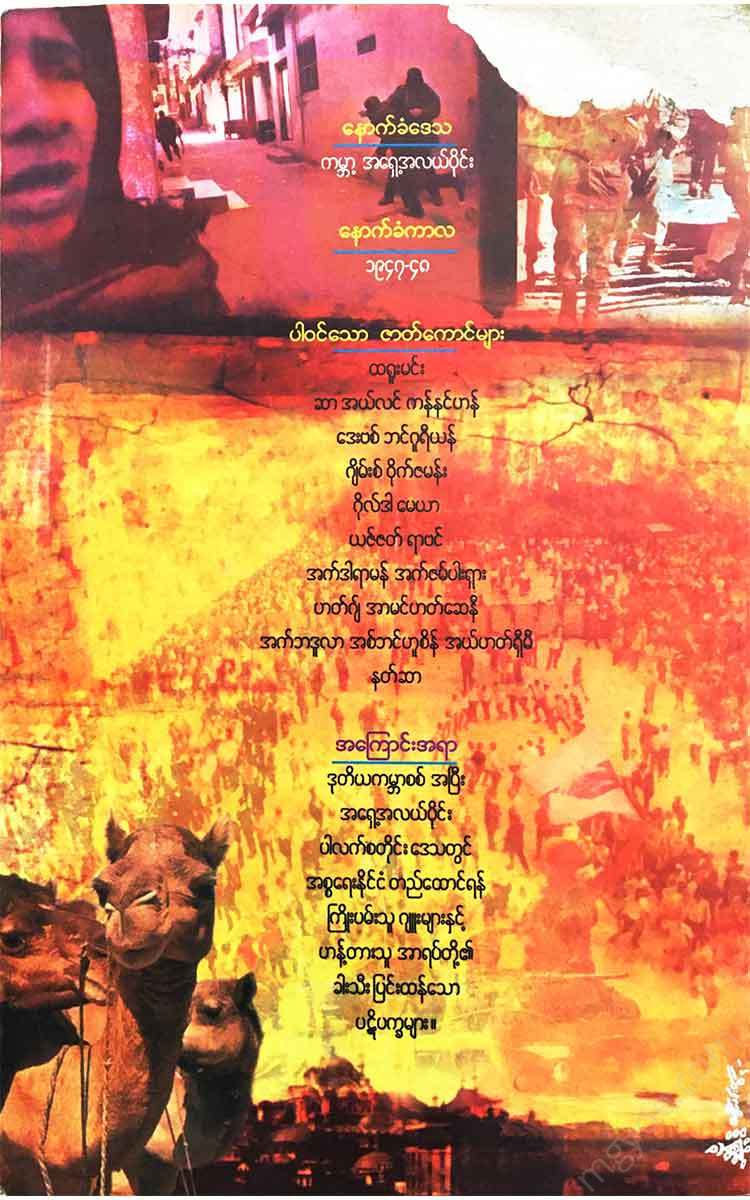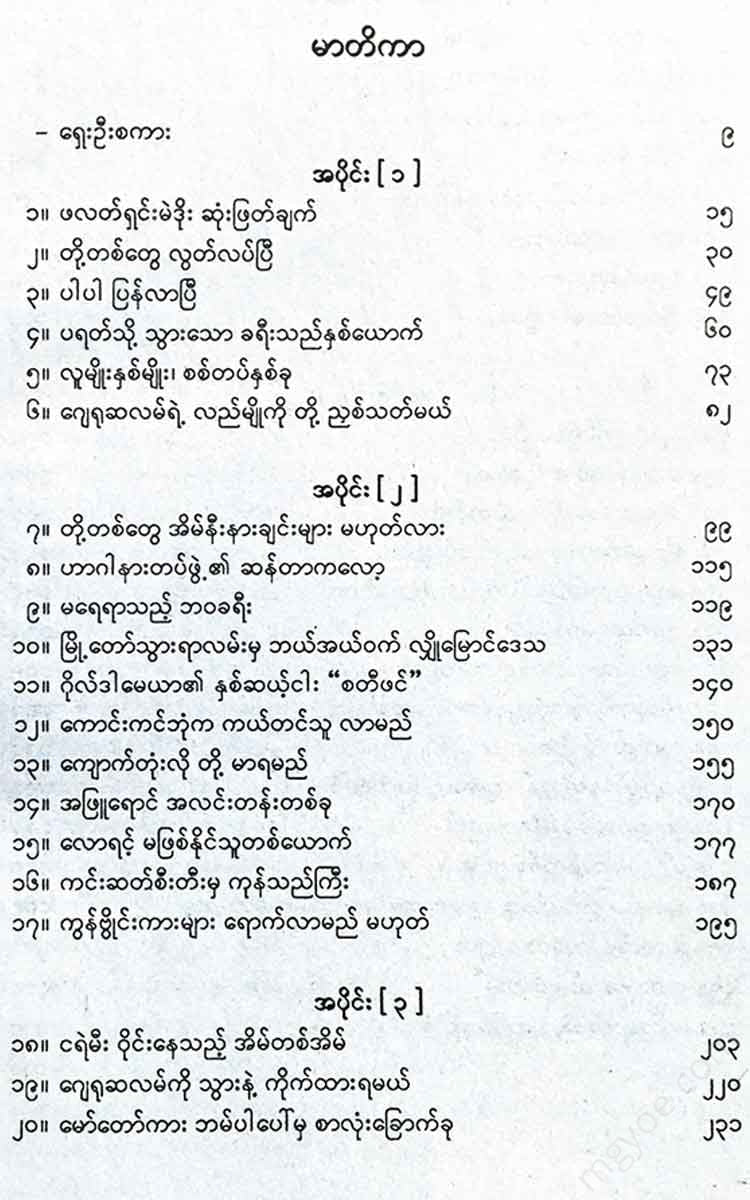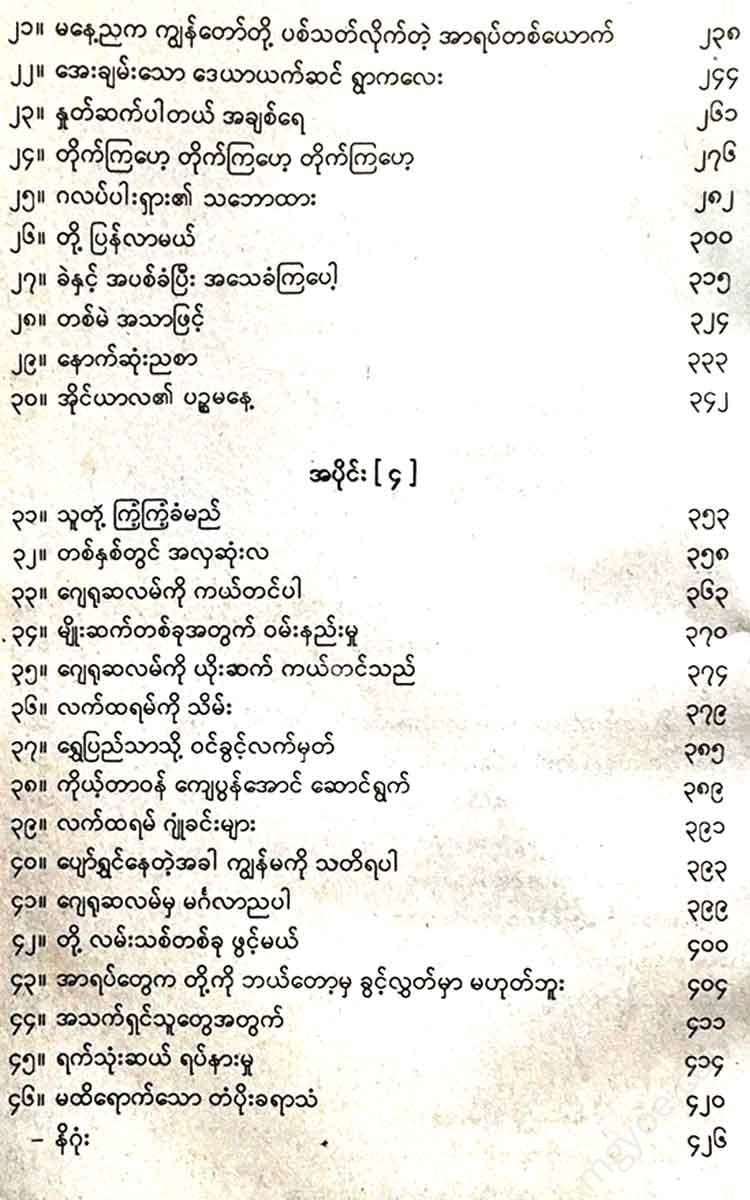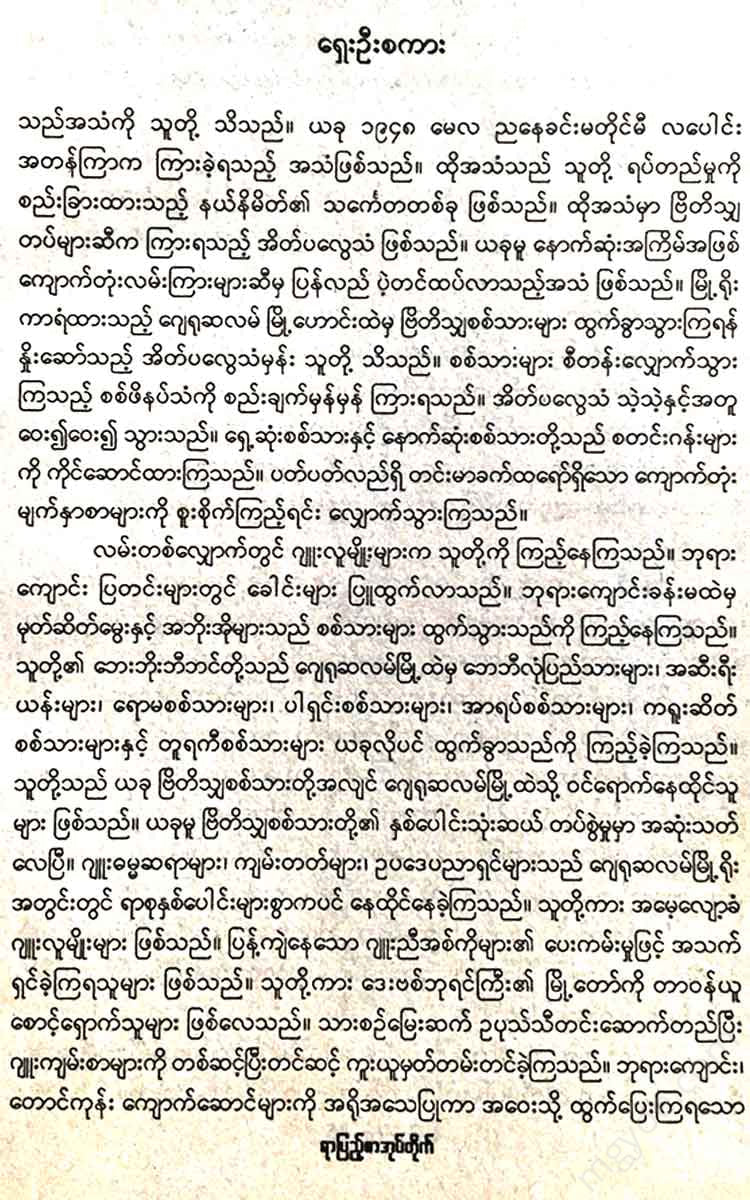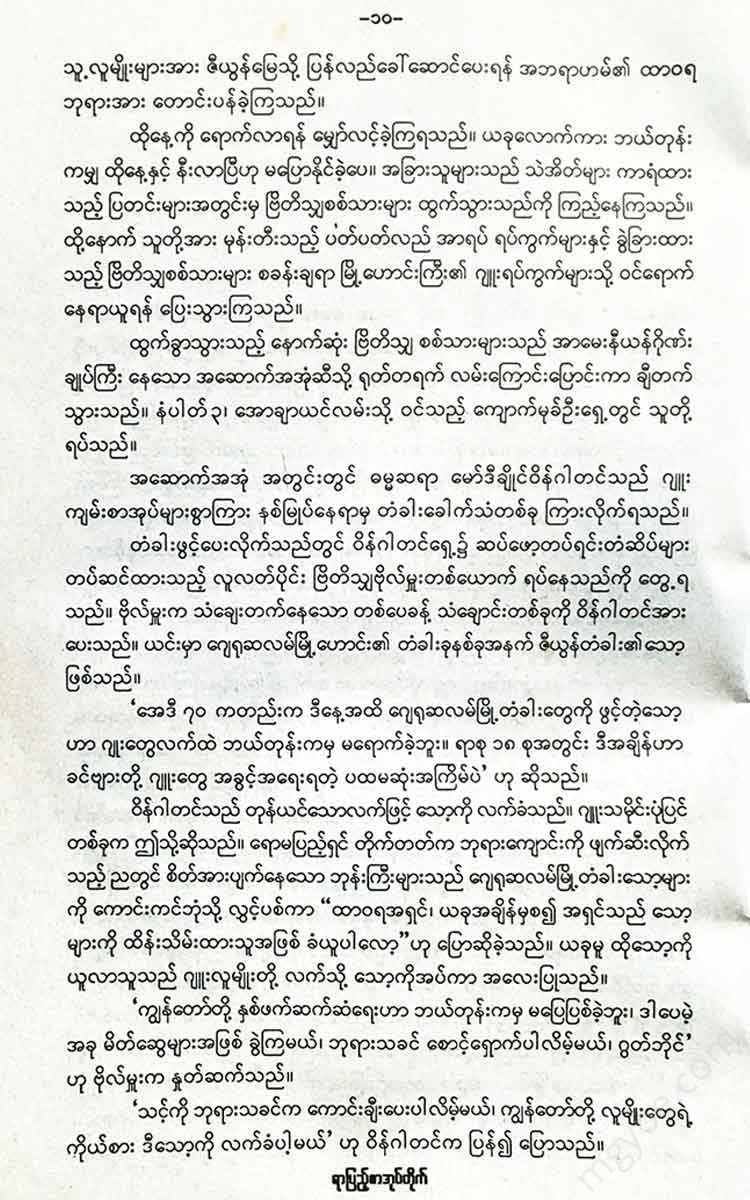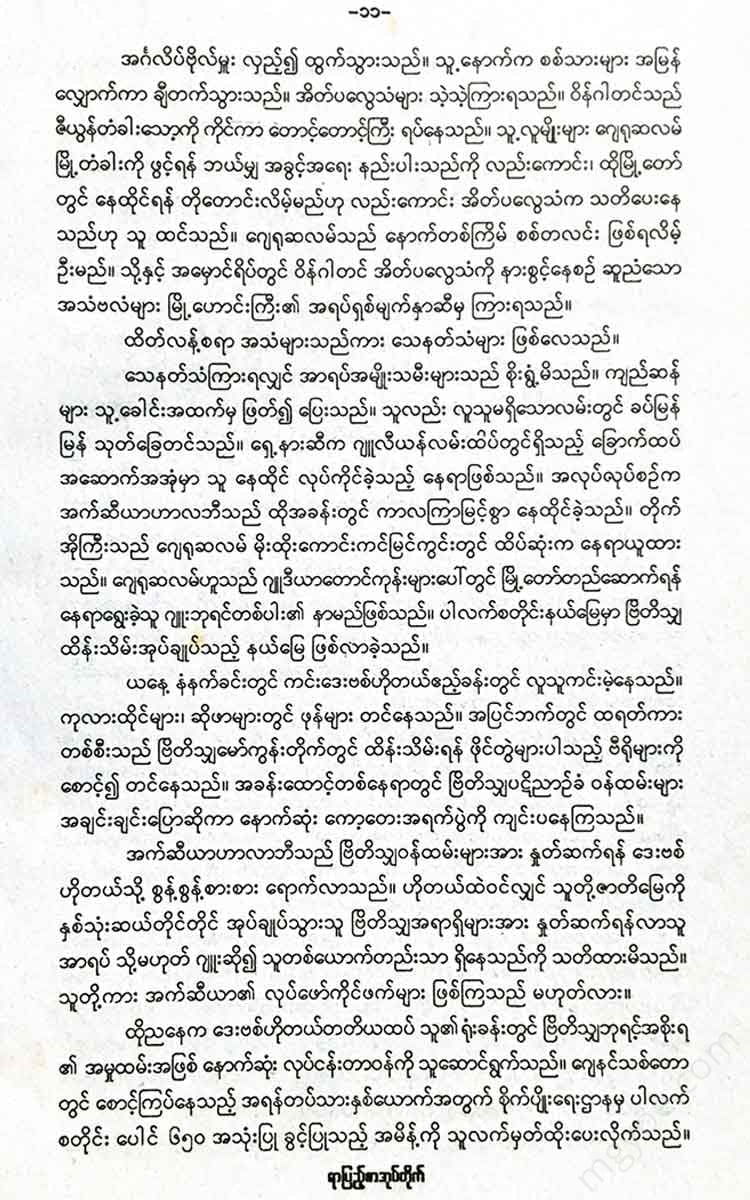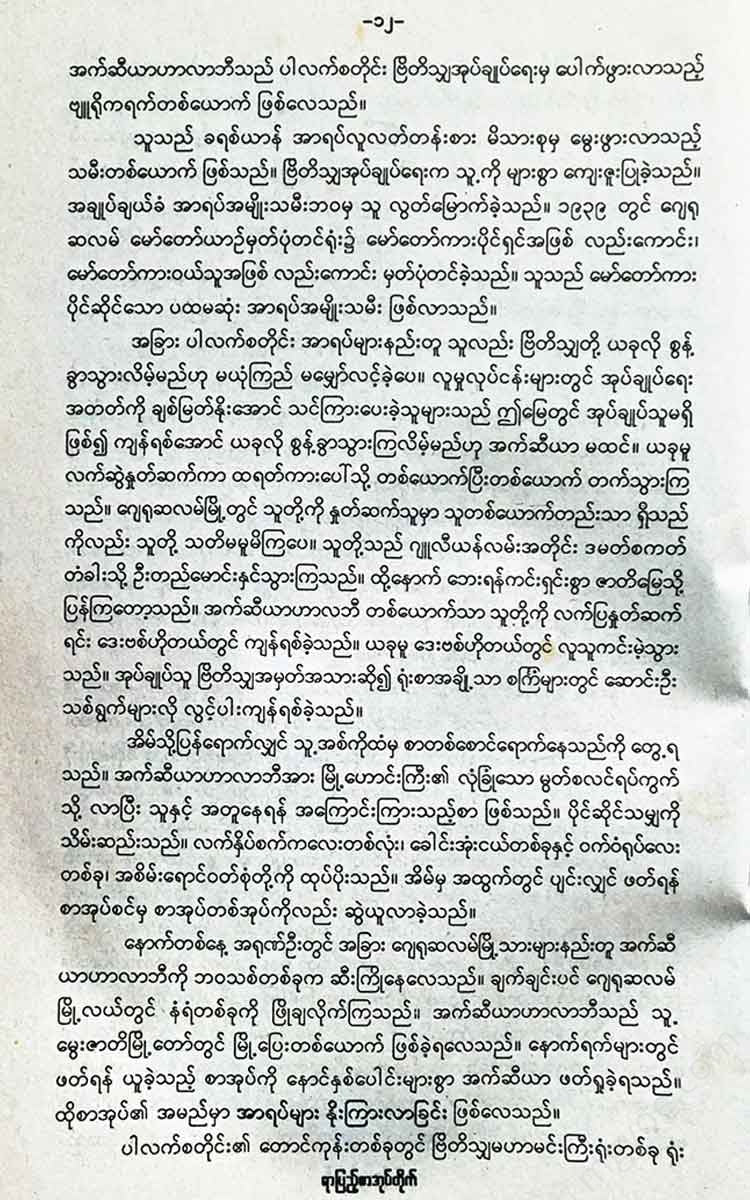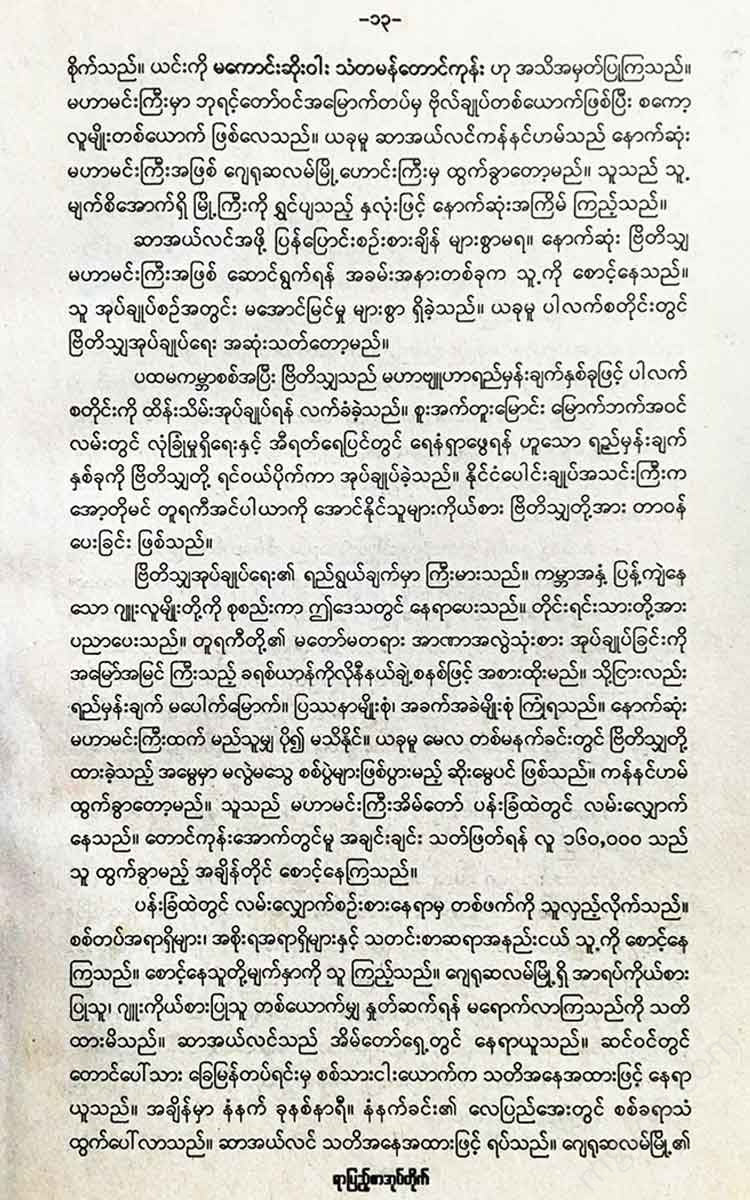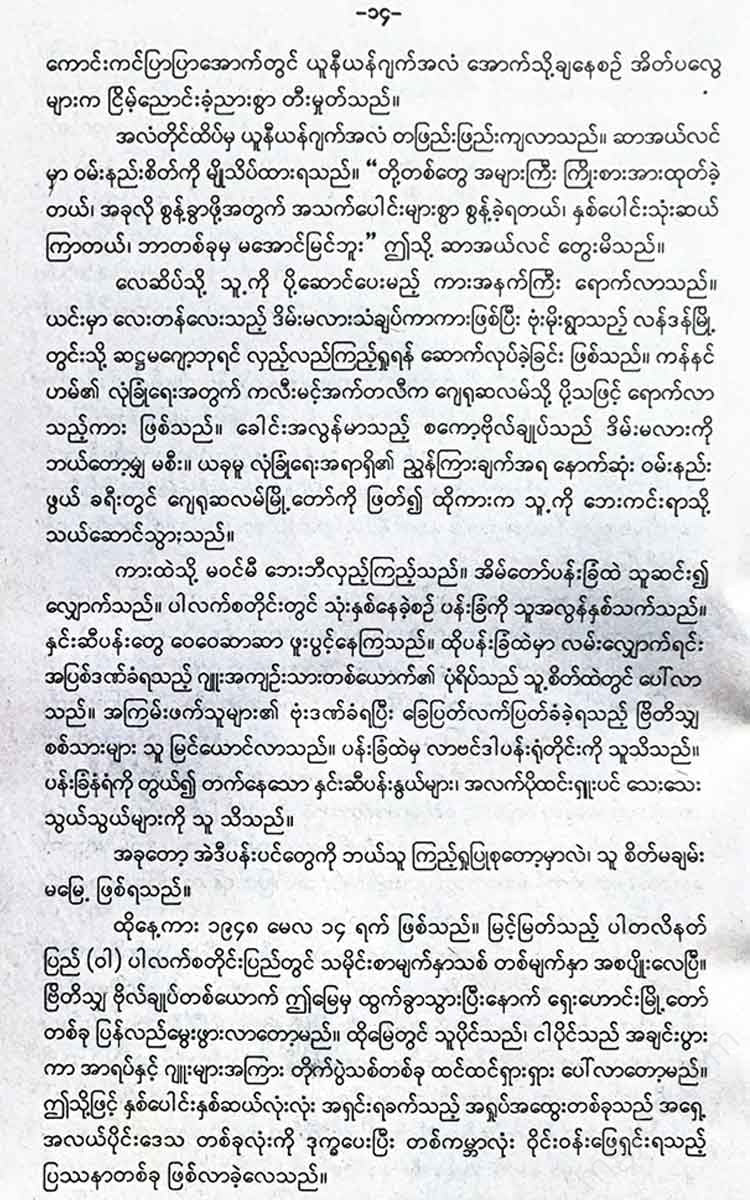Other Websites
Kyaw Aung - O Jerusalem
Kyaw Aung - O Jerusalem
Couldn't load pickup availability
:: Click on Buy it now to download the ebook . After placing your free order, the download link will be sent to the reader's email address used to log in to the mgyoe.com website.
:: The Ebook (Free) books on mgyoe.com are only books that have been circulating on the internet for a long time.
:: It is just a compilation so that readers can easily find it when they want to read it.
:: If reprinted by libraries, the download links for these e-books will be removed.
------------------------------------
Part [1]
Flushing Meadows Decision
It was Saturday evening, November 29, 1947. In Flushing Meadows, New York, the United Nations was housed in a brown, rickety building that had once been an ice skating rink.
The fifty-seven members of the United Nations Security Council have gathered to discuss the future of a small piece of land on the eastern shore of the Mediterranean Sea. It is about half the size of Denmark. It is a focal point for ancient cartographers in the universe, a place where the paths of ancient peoples have met since the dawn of time. It is the land of Palestine.
This land is the disputed land where their religious heritage began. This land rights debate has been a major issue in the history of the United Nations.
The debates must be recorded as the most spirited. No debate was as intense as his. The General Assembly proposed a plan to divide the ancient land into two parts, one Arab and one Jewish. Thirty years
The result of the struggle between Jews and Arabs over Jerusalem as theirs and mine, and the proposal by the UN Special Committee to find a solution, was the collective advice of the UN, which was accepted as a far-sighted advice.
It is a case of the mapmaker being possessed by a monster. It is best to negotiate and find a solution. Otherwise, the grievances will only grow. Fifty-seven percent of Palestine is given to the Jews, even though two-thirds of the population is Arab, and more than half of the land is Arab-populated. The Arabs own a lot of land in the Jewish state. More than the Jews. Before the move to their own lands, there were only about a thousand Jews in the Jewish state, the majority. The partitioned state is divided into three parts. Then the international community determines the right of passage. How much control can be exercised depends on the overall project. Neither country is in a position to defend itself militarily.** Twenty years later, after the Six-Day War, Israel has three times the original project area and is larger than its 1947 borders.
One important decision was that the UN did not grant the city of Jerusalem to either Israel or Palestine. Indeed, Jerusalem has been the political, economic, and religious center of Palestine since ancient times. The UN decided to place the city of Jerusalem and its suburbs under international control. The UN argued that granting ownership to either Arabs or Jews would create more unrest.
The proposal was a decision that shattered Jewish hopes. Allowing the creation of a Jewish state in Palestine without Jerusalem was a curse for the Jews. It was like having a body revived but without a soul.
For over two thousand years, the Jewish people were scattered from their homeland. This was expressed in the words, “If we have forgotten you, O Jerusalem.” The main walls of the Jewish temple, built by the scattered Jews, faced east, toward Jerusalem.
. If a wall of a house is named after Jerusalem, it will not be worshiped. The Jewish groom often marks the destruction of their temple by stepping on a glass during a wedding ceremony. The wedding prayer is often, “May you dance with joy in the streets of Jerusalem.” Jerusalem has one major hill. It is Mount Zion. It is a term used to encourage the Jewish people to return to their homeland.
During the spring festival, which is the sacrifice of the lamb, people often look at the Judean hills and make a promise, "Let's meet in Jerusalem" the following year.
There were other strategic considerations besides religious considerations. Two out of three inhabitants of Jerusalem were Jewish. The country of Judah was far from the sea. Without Jerusalem, the country of Judah would have become a coastal state without access to the Mediterranean Sea.
The Vatican, at the urging of the Pope, has given South American Catholic countries one warning: if they support the partition of Palestine, Jerusalem must be placed under international control.
It is impossible for the Jews to establish a separate state without the votes of the Latin American countries. The Jews have given in. They have lost Jerusalem.
Despite the loss of Jerusalem, the UN partition of Palestine has fulfilled a dream of two thousand years for the 600,000 Jews in Palestine. The Jews have embraced their biblical homeland. They left in the 70s. Now they will be able to return to the land of Canaan, which God promised to give to Abraham and his descendants.
Their ancestors had fled Mesopotamia as wandering Hebrews. Finally, under the leadership of Moses, they returned to the Judean hills after a forty-year journey from Egypt. Now they were able to establish their first sovereign state.
Under the reign of David and Solomon, the Jews were allowed to establish a kingdom for a hundred years. The region, which was a crossroads for trade routes between Europe, Asia, and Africa, was attacked by neighboring nations. The Hebrews were attacked for almost a thousand years. The armies of Assyria, Babylon, Egypt, Greece, and Rome invaded the land of the Jews one after another. In 586 BC and 70 AD, the victorious armies expelled the Jews. They destroyed the Temple built on the hill of Jerusalem. As they fled from their homeland, they became more attached to their ancient homeland.
The early Christian church, which sought to convert the ignorant to Christianity, discriminated against the Jews as a different religion. The Roman Emperor Theodosius II issued a law that suppressed Judaism, the religion practiced by the Jews. The Jews were segregated and ruled separately.
The Frankish king Dagobat expelled the Jews from Gaul. The Visigothic king of Spain converted his children and wives born to Jews to Christianity. The Byzantine emperor Hierarch
The Liturgy banned Judaism, the Jewish religion. Judaism was systematically suppressed during the Crusades.
Wiped out.
Many countries did not allow Jews to own land. Jews were not allowed to join medieval guilds of artisans and merchants.
These times are considered by Jews to be the Dark Ages. During the Dark Ages, the Jews were allowed to live peacefully under the rule of the Muslim rulers of Spain. Under Arab rule, the Jews prospered. Then, when Spain was conquered by the Christians, the Jews were oppressed. In 1442, the Jews were expelled from Spain under the reign of Ferdinand and Isabella.
In Germany, Jews were not allowed to travel on trains. They had to pay an entrance fee to enter the city. In the Republic of Venice, the term ghetto nuovo was coined. A ghetto was a Jewish quarter. Jews lived in segregated quarters. In Poland, Jews were persecuted in large numbers during the Cossack uprising. Over 100,000 died in ten years. The Tsarist occupation of Poland
Half of the world's Jews were in the Dark Ages. Jewish boys were required to serve in the army for twenty-five years from the age of twelve. The Jews were also taxed on the holy foods they ate.
Pick up. Jewish women are not allowed to live in university neighborhoods in big cities. Living
If you want, you can wear a yellow star, the symbol of prostitution, on your chest. In 1880, after the assassination of Alexander II, a mob that supported the Tsar's soldiers
The group entered one Jewish neighborhood after another, destroying, burning, and killing. This is how the term "systematic massacre" was coined.
The mass deportation of Jews to Hitler's gas chambers has become one of the bloodiest historical events in modern history.
In 1895, Captain Alfred Dreyfus, a Jewish officer in the French army, was paraded in Paris for allegedly giving military secrets to Germany.
A Viennese journalist was watching the ceremony. He was Theodosius Hassel, a Jew like Dreyfus. He had lived comfortably in the European community. He had ignored his race and religion. That day he heard the cries of “Kill the traitor, kill the Jew.” He was shocked. His hair stood on end. He understood immediately. The crowd had drunk Alfred Dreyfus’s blood.
It's not that they don't want to. They understand that they want to drink his blood too. Hazel was shocked.
He emerged from that scene in a daze. Out of his confusion came a clear vision. A new vision that would fulfill the goals of his people and write a new history for the twentieth century.
This is Zionism. Hazer wrote a one hundred page blue paper. It was called "The Jewish State."
Two years later, Hazel led the first World Zionist Congress in a casino in Basel, Switzerland. At Hazel's congress, an international Jewish executive committee was formed to guide the implementation of the Jewish state.
He established a Jewish national fund. Hazael supported the establishment of a Jewish state in Palestine.
A land bank was also established to purchase land in the country. The country's flag and anthem were also chosen.
The colors of the Jewish prayer shawl, white and blue, were chosen as the flag of the Jewish state. The name of the Hebrew song has a more meaningful meaning. It is hope.
Hazael's followers were eager to return to Palestine. The Jewish community was divided. Even during the Dark Ages, small Jewish colonies were established in Afghanistan, in Safed, on the border with Pakistan, in Tiberias in northern Palestine, and in Galilee in northern Israel. During the Christian era, Jews were not allowed to enter Jerusalem. The Crusaders burned Jews alive in the synagogue.
The Muslim rulers of Palestine were tolerant. Omar Khayyam did not oppress the Jews. Saladin brought the Jews to Jerusalem along with the Muslims. The Jews were first allowed to return to Palestine under the Ottoman Turks. In 1860, the English philanthropist Sir Moses Montefiore built the first Jewish quarter outside the walls of Jerusalem. He paid one pound (sterling) per night. After the condemnation of Alfred the Great, in 1890 Jerusalem had a population of fifty thousand, with thirty thousand Jews.
The Jews were being massacred in Russia, and at the turn of the twentieth century, Jews began to migrate to Palestine. These were the first fruits of the Hazael movement. Then Reuven Shari, a lawyer from Crimea, became a leader of the Zionist movement and migrated to Palestine. His wife was a pianist in a jazz band. “I graduated in law and now I am digging. My wife plays the piano to the music of Abraham and Moses. Now her hands are no longer playing the piano, they are milking cows. That way, I can develop this land,” Shari said.
Among those who returned to Palestine was P.M., thirty-eight miles northwest of Warsaw, Poland. He was only 19 years old and the son of a lawyer. He was fascinated by Zionism, which had crept into his father's house. His father's study was a gathering place for Zionists from Palestine. David Green
